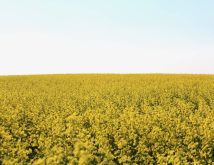Renewed funding has been confirmed to help get new varieties of Canadian Western Red Spring (CWRS), Canada Northern Hard Red (CNHR), Canadian Western Amber Durum (CWAD), and Canadian Prairie Spring Red (CPSR) onto western Canadian fields.
The Canadian Wheat Research Coalition has committed $11.8 million over five years to the University of Saskatchewan’s Crop Development Centre for wheat variety development. That rolls over the previous funding agreement, which ended on Dec. 31, 2024, plus an additional $2 million.
“This renewed investment by the CWRC will directly benefit Western Canadian farmers by supporting the development of wheat varieties with improved yields, stronger disease resistance, and better adaptation to our growing conditions,” said Dean Hubbard, the coalition’s chair and director with Alberta Grains, in a press release.
Read Also

What is perfect Christmas weather?
What is ‘perfect’ Christmas weather on the Prairies? Here’s where you should head this holiday, according to historical weather data.
Why it matters: Three Prairie producer groups feed check off dollars into the multi-year funding agreement for wheat variety development.
The coalition is a collaboration between Alberta Grains, the Manitoba Crop Alliance and SaskWheat.
“We’ve decided to come together for some of these really big pieces, because they are regional in nature… And we are all selling into the same market, and Canada has to hit the same quality and yield targets,” said Lori-Ann Kaminski, coalition president and research manager with the Manitoba Crop Alliance.
The choice to focus the recent funding announcement on those four crop categories was based on evaluated market opportunities, the sale ability for all of Western Canada and what Canadian farmers want to grow.
The groups also hope those revamped breeding efforts will help eliminate trade offs, such as having to opt for better disease resistance at the cost of yield.

Wheat genetics are set to advance with new round of funding. PHOTO: GREG BERG
Adam Carter is one of the breeders set to work on new varieties. His area of focus is CWRS wheat, and his role in the program will primarily be with the CWRS and CNHR cultivars.
Advances like genomics-assisted breeding technologies will make the breeding process more effective and efficient, Carter noted. Not to be mistaken with gene editing, he described it as an identification tool meant to support gene selection.
“This is more like making sure that we’re including valuable genes in our varieties that provide disease resistance, good quality profiles and, in many cases, we’re stressing increasing yield,” Carter said.
Right now, Carter and his team have been targetting fusarium head blight screening and resistance. They’re also focused on pest resistance, such as wheat stem sawfly and orange wheat blossom midge.
Another key aspect of breeding is being able to answer questions and explain what may have went wrong.
“When a crop gets to a certain stage, it needs to prove itself to be released as a new variety,” Kaminski said. “So, there are lots of field testing pieces that need to happen, and so we have some money for those kinds of operations as well.”
This focus comes with ongoing changes in climate and disease patterns that affect various plant stressors such as weather conditions and soil.
From start to finish, the release of a new variety from the initial cross to commercial release can take 10-12 years worth of funding.
















